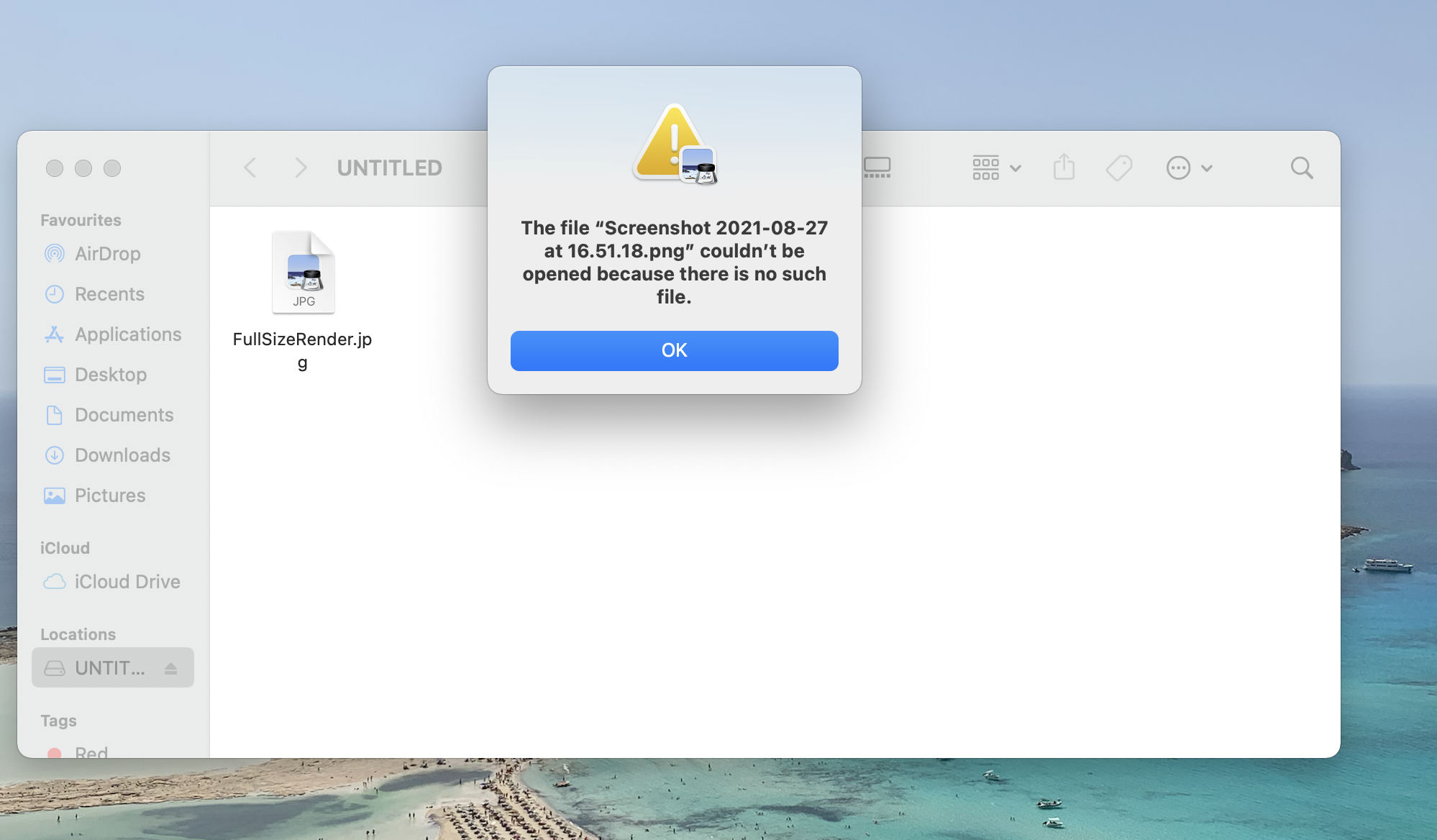Are you a Mac user experiencing frustration because your Mac is not allowing you to open certain files? Don’t worry, you’re not alone. Many Mac users encounter this issue at some point, but the good news is that there are solutions to help you get back on track. In this article, we will explore various troubleshooting steps to resolve this problem and regain access to your files.
1. Dragging the File onto the App Icon:
One simple method to open a file is by dragging it onto the app icon in the Finder or the Dock. This action will prompt the app to open the file, allowing you to access its contents. Give it a try and see if this method works for you.
2. Using the “Open With” Option:
If dragging the file onto the app icon doesn’t work, you can try selecting the file in the Finder and choosing “File > Open With” from the menu. This will display a list of apps that are compatible with the file type. Select the desired app, and it should open the file for you.
3. Control-Clicking the File:
Another option is to control-click on the file you want to open. This will bring up a contextual menu where you can choose the “Open With” option. Similar to the previous method, you can then select the app you want to use to open the file.
4. Opening the App First:
In some cases, you might find it helpful to open the app first and then choose “File > Open” from the app’s menu. This method allows you to navigate to the file you want to open directly from within the app, bypassing any potential issues with file associations.
Now, let’s address another possible reason for being unable to open files on your Mac – file permissions.
5. Checking and Changing File Permissions:
If you’re encountering permission issues, it means that your Mac is restricting access to certain files. To change permissions for files, folders, or disks on your Mac, follow these steps:
– Select the file, folder, or disk you want to modify.
– Choose “File > Get Info” from the menu. This will open the Get Info window.
– If the Sharing & Permissions section is not visible, click the arrow next to it to expand.
– If the lock icon at the bottom right corner is locked, click on it and enter your administrator password to unlock the permissions.
– In the Sharing & Permissions section, you’ll see a list of users and groups. Select the one you want to modify.
– Click on the pop-up menu next to the selected user or group and choose the appropriate privilege setting, such as Read & Write or Read Only.
By adjusting the permissions, you can grant yourself or others the necessary access to open and modify files as needed.
If you’re facing difficulties opening files on your Mac, try these troubleshooting steps: drag the file onto the app icon, use the “Open With” option, control-click the file, or open the app first and choose “File > Open.” If the issue persists, you may need to adjust file permissions using the Get Info window. Remember, these methods should help resolve most common file opening issues on Mac.

How to Force a Mac to Open a File?
To force a Mac to open a file, there are several methods you can use. Here are the steps you can follow:
1. Drag the file onto the app icon in the Finder or the Dock:
– Locate the file you want to open in the Finder.
– Click and hold on the file.
– Drag the file onto the app icon that you want to use to open it. This can be an app located in the Dock or an app located in the Applications folder.
2. Use the “Open With” option in the Finder:
– Locate the file you want to open in the Finder.
– Right-click (or Control-click) on the file to open a contextual menu.
– Choose the “Open With” option from the menu.
– A list of available apps will appear. Select the app you want to use to open the file.
3. Use the “Open With” option in the app:
– Open the app you want to use to open the file.
– Go to the app’s menu bar and choose “File” from the menu.
– Select the “Open” option.
– Locate and select the file you want to open.
– Click the “Open” button.
By following these methods, you can force a Mac to open a file using the app of your choice. Remember to select the appropriate app that is capable of opening the file format you want to access.
Please note that forcing a file to open with a specific app may not always be successful if the file format is incompatible or if the chosen app does not support that particular file type.
How to Fix File Permissions On a Mac?
To fix file permissions on a Mac, follow these steps:
1. Select the file, folder, or disk for which you want to change permissions.
2. Go to the File menu in the Finder and choose “Get Info” or simply press Command + I.
3. In the Get Info window that appears, locate the “Sharing & Permissions” section. If you don’t see this section, click the small arrow next to it to expand it.
4. Here, you’ll see a list of users and groups with their respective access privileges.
5. To change the permissions for a specific user or group, select it from the list.
6. Click the small pop-up menu next to the user or group’s name and choose the desired privilege setting. The available options include Read & Write, Read only, and No Access.
7. If you want to apply the same permissions to all the items inside the folder, click the gear icon at the bottom of the Get Info window and choose “Apply to enclosed items.”
Note that changing permissions may require administrator access. If you’re not the administrator, you might need to authenticate with an administrator username and password to make changes.
By following these steps, you can easily fix file permissions on your Mac and control who can access, modify, or delete your files and folders.
How to Unlock File Permissions On a Mac?
To unlock file permissions on a Mac, follow these steps:
1. Select the disk or file for which you want to change the permissions.
2. Go to the top menu and click on “File”.
3. From the drop-down menu, select “Get Info”. This will open a new window with information about the selected disk or file.
4. In the “Get Info” window, you will see a section called “Sharing & Permissions”. Click on the arrow next to it to expand the section.
5. At the bottom right corner of the “Sharing & Permissions” section, you will notice a lock icon. If the lock is locked, it means the permissions are currently restricted.
6. To unlock the permissions, click on the lock icon. You might be prompted to enter your administrator password.
7. After entering the password, the lock icon will change to an unlocked state, indicating that the permissions have been unlocked.
8. Now, you can make changes to the permissions by clicking on the “+” or “-” buttons to add or remove users or groups, respectively. You can also adjust the privileges for each user or group by selecting their name and choosing the appropriate permissions from the drop-down menu.
9. Once you have made the necessary changes, close the “Get Info” window. The file permissions have now been unlocked and modified according to your preferences.
Please note that changing file permissions should be done with caution, as it can affect the security and accessibility of your files. Make sure to only grant permissions to trusted users or groups and be mindful of the potential consequences of altering permissions for system files or critical applications.
Conclusion
Mac offers users a variety of convenient methods to open files with different apps. Whether it’s dragging the file onto the app icon, using the “Open With” option in the Finder, or right-clicking to choose an app, Mac ensures a seamless and user-friendly experience.
Furthermore, Mac allows users to easily change permissions for files, folders, or disks. By selecting the desired item and accessing the “Get Info” option, users can navigate to the “Sharing & Permissions” section to adjust privileges. This level of control ensures that users can manage access to their files and maintain the security and privacy of their data.
Mac’s user-friendly interface and intuitive design make it effortless to navigate through the various settings and options. Whether it’s opening files or managing permissions, Mac provides a straightforward and efficient experience for users.
Mac’s attention to detail and focus on user experience are evident in its file management and permissions features. Mac ensures that users have the tools they need to easily access and control their files, making it a reliable and efficient choice for both personal and professional use.








